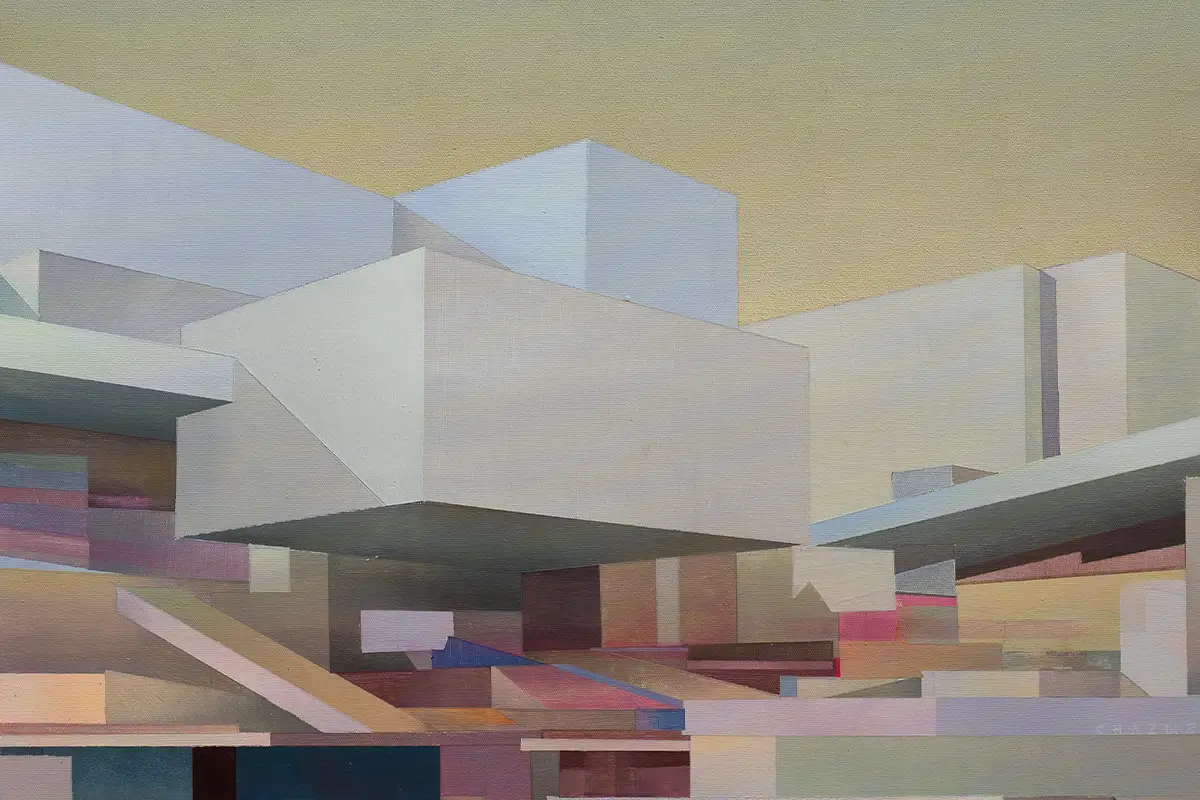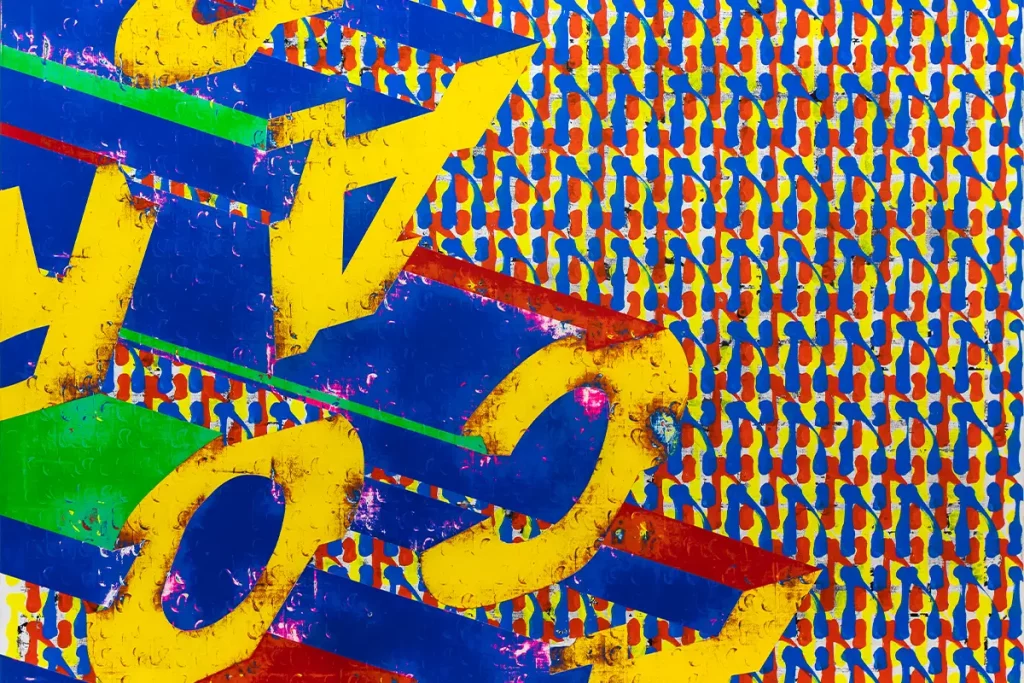Urban Art Fair was launched in 2016 in Paris by its founder Yannick Boesso. The 7th edition will take place in its native venue, Le Carreau du Temple, and open to the public on April 14, 2023
Urban Art Fair approaches its seventh edition at Le Carreau du Temple
Besides art galleries and auction houses, art fairs represent the third-largest institution in the art market. They amass artworks, galleries, and art professionals in one place for a specific time while leading to the foundation of collaboration and exchanges. They are all different in size and scope. Within this variety is Urban Art Fair, the first international Art fair dedicated to circulating urban art.
It was launched in 2016 in Paris by its founder Yannick Boesso. The seventh edition will take place in its native venue, Le Carreau du Temple, and open to the public on April 14, 2023.
UAF and the aggregation of voices. The surfacing of a discourse
The fair, as a public event, by its spatial and symbolic connotations, allows the consolidation of the discursive formation. Through thematic and spatial grouping, the fragmentariness of voices has elevated to discourse. This is crucial to effective communication with the message’s recipient, the audience.
«When you gather energy, one structure, subject, and topic, you can explain it better. You can give keys to understanding to people. That is why it was essential to establish an urban art fair», Boesso says.
The grouping generated by the fair contributes to the determination of an institutional profile of an organism that better enables the circulation and distribution of works and the consolidation of the operators’ reputation. Furthermore, urban art reinforces its status and legitimacy by creating a contact zone with international markets.
Overlapping horizons: collaboration as the core of UAF’s ethics
The entire architecture of the interactions within the fair is inspired by the desire to foster close relationships between the participants.
Organizers, exhibitors and artists share the same purpose, for the gratification of which they cooperate according to the principle of intimate collaboration. The common goal is to produce a relevant commercial platform that can reach an audience as broad as possible to accomplish the expectations of all participants in the process.
The public programme of 2023: Urban Art Fair
Beyond the exhibition, since 2016, the event has consisted of talks, live performances, screenings and various activities constituting the public program.
Following a centrifugal motion, UAF extends the area of its intervention, crossing the boundaries of its own walls.
The physical and static space of the fair will be overstepped by site-specific interventions around the city and by developing an online platform.
On the one hand, at the atrium of Galerie la Fayette, a sculpture by Astro, a well-known street artist represented at the fair by Mazel Galerie, will be installed. On the other hand, interviews with some exhibiting artists will flow into a UAF Stories digital archive.
UAF is conceived as a three-dimensional entity, fluctuating between expanded modes of curating an exhibitionary format.
Urban Art Fair as an exhibition
The tension toward which UAF tends is constructing an exhibition format, not a bare commercial showcase. Instead, the event aims to offer the public a specific narrative through thematic choices. In Boesso’s conception, UAF is not a fragmentary collection of artifacts and practitioners but an organism resulting from curatorial decisions.
Of thirty-seven participating galleries, twenty-one will propose a solo show. The remaining will exhibit a group show. Among the many participants, Boesso mentioned Underdogs Gallery, a cultural platform based in Lisbon, working with a diverse roster of Portuguese and international artists. For the seventh edition of UAF, the gallery will participate by showing a dozen artists traversed by the common leaning toward abstraction.
UAF and the ecology of arts
«Art is crucial to share and formulate new cultural and value landscapes», says Boesso. Each artist, bearer of an intimate vision, contributes to the determination of the multiple, the multifaceted. The individual trace, embedded in a network of exchanges and integrations, generates new possibilities.
The result of this reception, assimilation and integration of contents generates state-of-the-art expansion. Instances from specific geographical areas of the world mingle with some other cases referable to other cultural references. «In this form of hybridization lies the value of art», says Boesso.
Despite the desire to cross European borders, the overriding urgency is to nurture the immediate surrounding.
«We feel the responsibility of our role and of having to do something bigger; at the same time, being rooted in the local scene is not a lack of ambition; on the contrary, it is a desire to enrich and nourish the local soil», says Boesso.
Urban Art Fair: globalism and localism
Professional and non-professional participants in Urban Art Fair come from over the world. The ecology generated by the event is global in scale. At the same time, this complex of interactions inhabits the time of its duration on a specific local platform, Paris.
It is a place historically available to the reception of instances of hip-hop culture and urban movements in general. Moreover, its urban fabric, characterized by the porosity of its membranes, has allowed the germination and proliferation of experimentation related to street art.
Ground fertility allows for the identification and drawing of further trajectories. Inigo Sesma, for example, a Spanish street artist represented at the fair by PDP gallery, thanks to the mediation of UAF, will, for the first time, intervene on the walls of Le Mur Oberkampf.
Urban art and urban social tissue. UAF as a chamber of reflection
Urban art and urban social fabric live in a mutual conditioning relationship. The two spheres are inextricably intertwined. One reflects the other. Instances and claims from the social belly circulate tirelessly in the art that originates from it.
Considering this link between the two dimensions, «without a doubt, the most relevant contemporary issue around which the reflections of the artists shown at UAF orbit is that of sustainability and ecology», says Boesso.
«The interest shown in the theme can also be confirmed from the positive response in sales of previous editions by three artists in particular: Dan Rawlings, Bordallo II, and Mathieu Lucas».
Urban artists and the art market: UAF
Urban art is a developing form of visual art that eludes easy definitions. However, commonly it denotes ephemeral works of art placed in public space outside the context of traditional art venues and generally considered unauthorized by viewers. Over time, mainstreaming led to commercialization. Some say that this path has progressively eroded this art form’s integrity.
Against this, Boesso argues the relevance of urban art’s presence within the economic exchange circuit. «Success in the marketplace», he says, «is foundational to growth. If we present street artists badly, they will be less well-known and less accepted in the art market. And the art market is a way to support the expansion and evolution of art projects. We aim to prepare a platform allowing artists to express themselves fully».
The case of Invader
Urban art was born as a platform that exorbitated the perimeter of normative-institutional boundaries. It gradually evolved from an activity involving the property’s illegal defacement and being sanctioned to an established and legitimate art form.
«The transposition to the exhibition context, originally not referable to this creative practice, is a challenge for urban artists», says Boesso. He claims that the transition constitutes an opportunity for the artist to reshape his or her practice and travel new trajectories.
To clarify, the founder names the case of Invader. «The genius of the artist», Boesso concludes, «lies in his capacity to modulate the nature of his intervention, shaping with equal success between studio and street artworks. The fact that street art was born in the street does not imply it should be confined to it».
Urban Art fair
Urban Art Fair is the first international fair dedicated to urban art, created in 2016 by Yannick Boesso, president and founder. Since 2016, Urban Art Fair has sought to emphasize the richness of urban creation. Collectors, professionals and amateurs meet every year in April to come and discover both emerging and established artists.




















